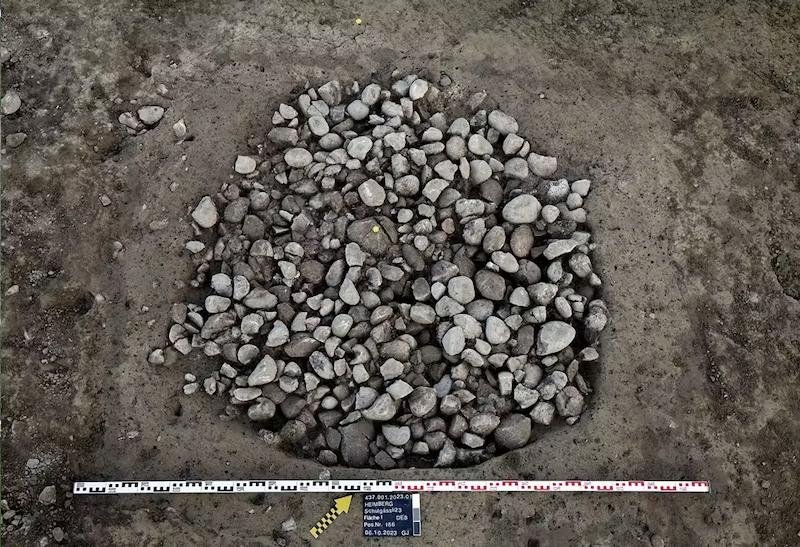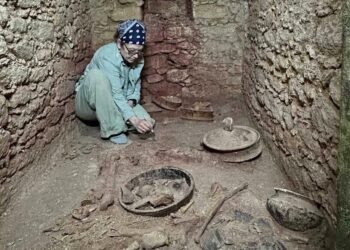In the autumn of 2023, the Archaeological Service of the Canton of Bern conducted a rescue excavation in Heimberg, Switzerland, ahead of a construction project. While the investigation aimed to uncover insights into a potential Roman site, it instead unveiled the remnants of a previously unknown Bronze Age settlement.

Spanning nearly three months, the excavation in Schulgässli revealed various settlement remains across an area of approximately 1,000 square meters. Among the findings was evidence of a high proportion of hearth stones and a significant quantity of Bronze Age pottery, alongside post positions and pits.
Notably, two pits were discovered filled with hearth stones, suggesting their use as heat accumulators for cooking or heating—a characteristic feature of the Bronze Age.
Clay extraction also played a vital role in the settlement, with pits likely utilized for this purpose. Clay, an essential raw material during the Bronze Age, found applications in house construction, such as plastering wattle walls and crafting pottery vessels. The excavation unearthed a package of clay layers up to 35 meters thick, indicative of the significance of clay in the area’s historical activities.

Furthermore, the investigation revealed that the clay deposit was later exploited by potters from Heimberg during the modern era, as evidenced by subsequent extraction pits.
Similar activities were observed in a brick factory excavated in Heimberg in 1964, suggesting a continuity of ceramic production in the region since Roman times.
The discovery in Heimberg adds to a series of Bronze Age findings between Thun and Bern in recent years, underscoring the importance of the Aare Valley as both a habitat and a transportation route connecting the Alps with the Swiss plateau.
Remains of pile-dwelling houses in the lower basin of Lake Thun and extensive settlement remnants in areas like Thun-Schoren, Richigen, and Kehrsatz/Chlywabere further emphasize the region’s historical significance.
























